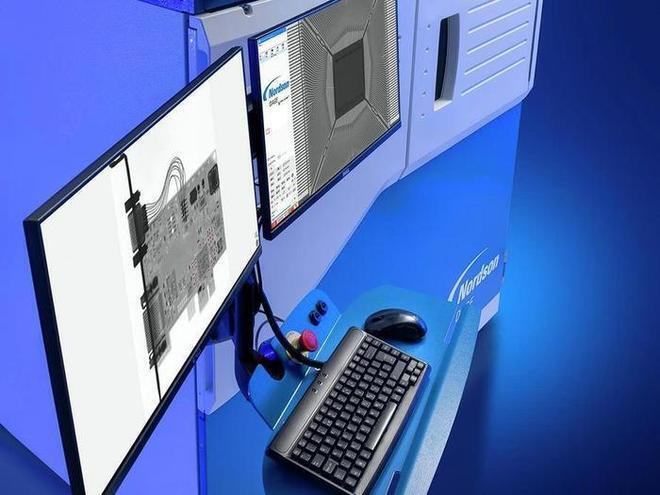The working principle and advantages and disadvantages of image intensifiers and digital flat panel detectors
Release time:2024-03-07Publisher:Jeenoce
(1) X-ray detection image intensifier:
Summary principle: The X-ray detection image intensifier consists of an image enhancement tube, tube container, power supply, and bracket. The image enhancement tube is the core component, which is supported and fixed in a tube container with anti magnetic performance by a bracket. The image enhancement tube is a large, highly vacuum electronic tube, with a large input screen at the front end, followed closely by a photocathode PC. The tube wall has focused electrodes G1, G2, G3, and a smaller output screen at the tail. The front end of the output screen has an accelerating electrode A (anode), and each electrode is supplied with the required working voltage by an external circuit. Through the X-ray of an object, it is projected onto the input screen, generating a photon image. The photocathode produces electrons corresponding to the brightness of the photon image, forming an invisible electron image. This image is focused by an electrostatic lens under the action of an anode electric field, accelerating towards the anode and projected onto the output screen, generating a visible fluorescence image.
Advantages:
High conversion efficiency;
Wide dynamic range;
High spatial resolution;
High X-ray absorption rate in the low resolution region (due to its higher atomic number than amorphous selenium);
Strong environmental adaptability;
Disadvantages:
Relatively slightly lower than amorphous selenium flat panel detectors;
The image will have a certain degree of deformation;
Over time, the image will experience a certain degree of attenuation.
The image undergoes secondary CCD replacement, which may result in certain deviations;
Low resolution accuracy (it is easy to see complete penetration in some areas and incomplete penetration in some areas);
Unable to distinguish minor differences.

(2) Digital flat panel detector
Summary principle: Photoconductive semiconductors directly convert the received X-ray photons into charges, and then the electrical signals are read out and digitized by thin film transistor arrays.
Specific principle:
1. X-ray incident photons excite electron hole pairs in the amorphous selenium layer;
2. Electrons and holes move in the opposite direction under the action of an external electric field, generating a current that is proportional to the number of incident X-ray photons; 3. These current signals are stored on the interpole capacitance of TFT, and each TFT and capacitance form a pixel unit.
Advantages:
1. High digital transmission conversion efficiency;
2. Wide dynamic range;
3. High spatial resolution;
4. The clarity is very good;
5. The image has no deformation;
Strong sense of image hierarchy; It can distinguish very small differences.
Long service life.
Disadvantages:
Low X-ray absorption rate (with the improvement of technology, there is no difference or even exceeding the image brightness and image intensifier);
The selenium layer is sensitive to temperature (currently, some workshops and laboratories have relatively stable temperatures, and within the normal temperature range, it is not affected by images);
The X-ray detection image enhancer was originally designed to compensate for the low brightness of digital flat panel detectors. Currently, the brightness of digital flat panels is already bright enough (under the same conditions of KV and UA). X-ray detection image enhancers are beginning to exit the market. Currently, many well-known X-ray devices use digital flat panel detectors. The advantage of flat panel detection is that image intensifiers cannot replace it. And some of the drawbacks of image intensifiers cannot be compensated for.

